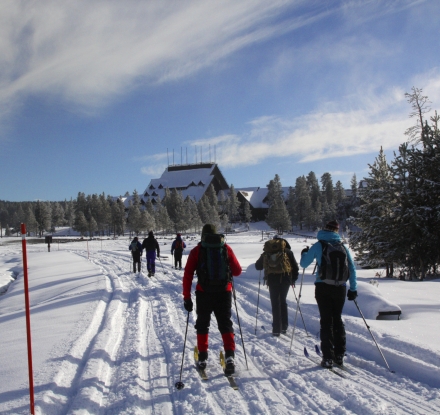
What to Expect: Winter Photography in Cody Yellowstone
With endless forests, valleys, frosty wildlife, snow-covered trees, and strange geothermal-related formations, winter is a prime time for outdoor photography in and around Cody Yellowstone. Photographers come from around the world to capture this region’s winter wonders, and the results are nothing short of spectacular.
Whether you’re a professional photographer, a casual hobbyist, or something in between, you’re in for a treat when you pack your camera and head to northwest Wyoming. Here are some examples of what photographers can expect to see during a winter photo safari to Cody Yellowstone.
Wonderful Winter Mysteries
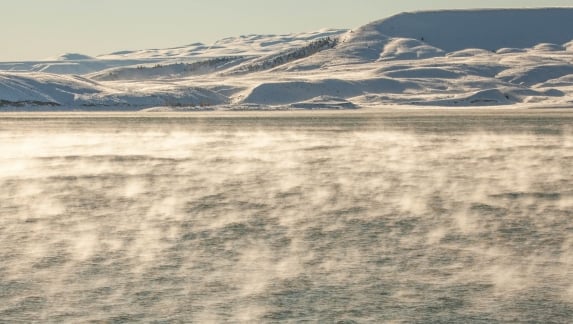
Wintertime in Cody Yellowstone brings plenty of fascinating visuals along with it. When the conditions are just right, keep your eyes peeled for light-reflecting ice crystals, sometimes called ice fog, floating in the air, giving the illusion of fog. As the crystals drift through the air, they become natural — and breathtaking — sun-catchers that reflect the sun’s rays.
During this time of year, rime from hydrothermal mist accumulates on the branches of trees. When combined with falling snow, trees take on an eerie appearance and are known as ghost trees. These much-photographed trees are stunning to behold, but they can eventually cause tree limbs to break.
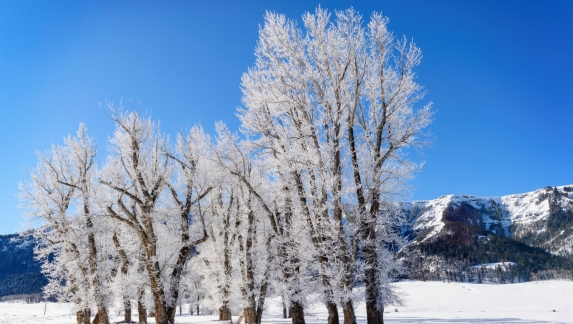
There’s also plenty of hoarfrost to see. This rare, feathery frost occurs when water vapor forms in subzero temperatures. The resulting frost sticks to all kinds of surfaces, including trees, rocks, and even snow.
Snowy Sights
Here in Cody Yellowstone, powerful winter winds are known to blow snow around like dust. The resulting drifts, patterns, and formations often result in eerily symmetrical snow sculptures. You’ll also want to be on the lookout for snow mirrors. These shiny, icy patches form when the snow melts slightly and then refreezes, creating a smooth, reflective surface. When conditions are right, entire fields and mountains can appear shiny and reflective from a distance.
Thanks to the region’s dark night skies, it is possible to see starlight shadows created by starlight alone. The winter snow cover helps create the perfect surface for the shadows. The shadows can be faint, so photographers must allow enough time away from other light to let their eyes adjust.
Photographing Wildlife in Winter
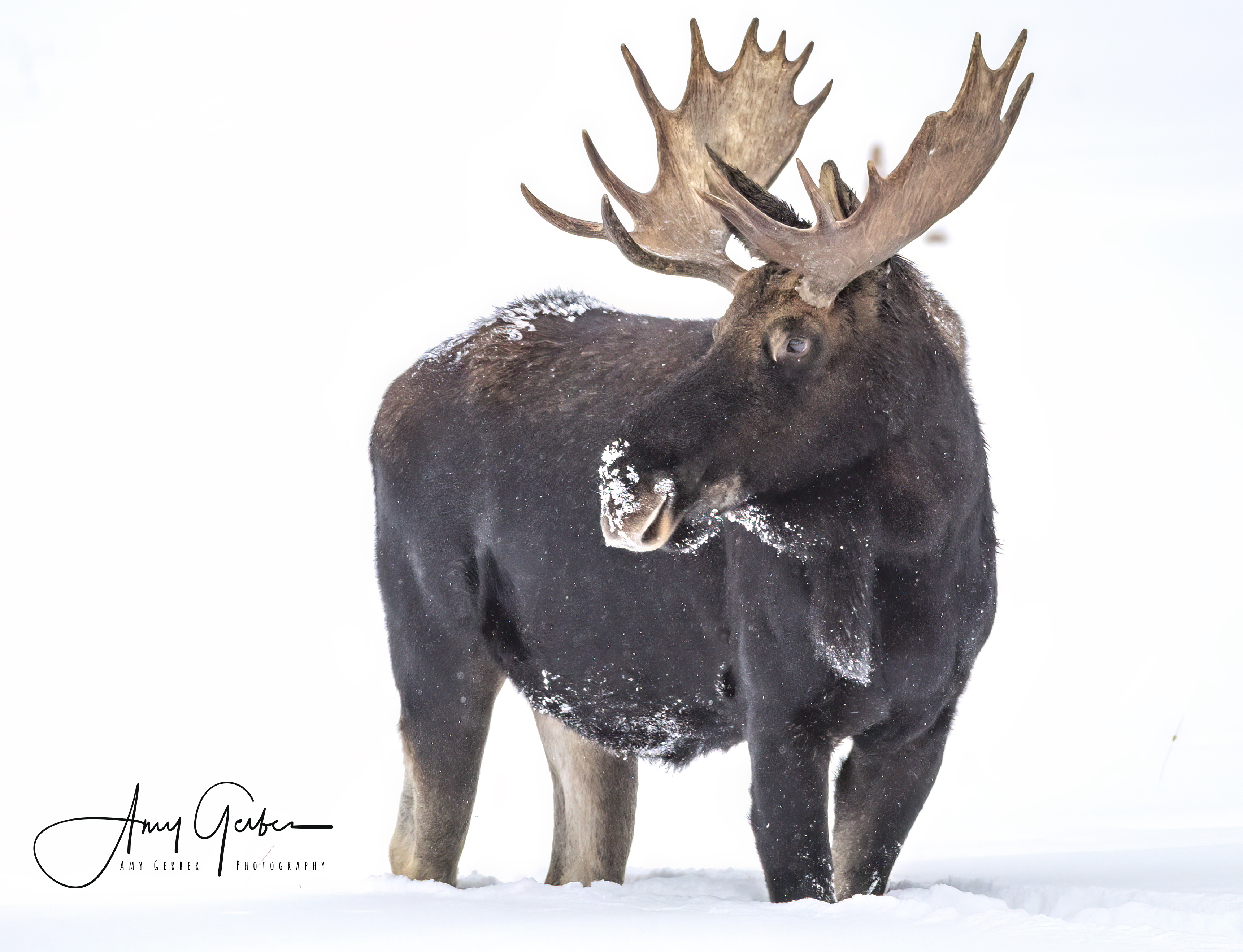 (Photo: Amy Gerber)
(Photo: Amy Gerber)
Cody Yellowstone is known for its incredible wildlife. In fact, wild animals vastly outnumber humans in this neck of the woods! And during the winter months, there are numerous places to capture the snow-covered critters as they lumber (fly, swim or run) along or above the endless forests and valleys. Animal tracks in the snow can also tell compelling stories about what has recently happened out in the wild. Best of all, photographers can easily illustrate these stories with snow-track images.
Here’s what to know about photographing wildlife in Cody Yellowstone throughout the winter.
Always Be Prepared
Photographers should be prepared for the impact of extreme cold on equipment and bodies. Layer up. Bring a selection of long- and wide-angle lenses and a tripod that will not freeze. Pack extra batteries. And consider adding insulation to camera bags. There are stores in Cody with a broad selection of gear and outdoor essentials for last-minute needs.
Know Where to Go
The 52-mile road between Cody and the East Gate to Yellowstone National Park features dramatic natural landscapes and photo-worthy manmade architectural features. You will likely see wildlife like bison and bighorn sheep along this road. You can also get great shots of skiers at Sleeping Giant Ski Area, cross-country skiers, and snowshoers along the Shoshone River trails and at Pahaska Tepee (Buffalo Bill’s original hunting lodge).
Interested in venturing even further? Book a snowmobile tour and make your way through Yellowstone National Park.
Wildlife to photograph
A huge array of wildlife can be photographed during the winter season, and often, the critters display much different behavior during the winter. Here are some examples:
- Bison forage for food beneath the snow, and they can sometimes be seen with large clumps of snow and ice dangling from their chin hair. These oddly shaped “snowball beards” dangle precariously from a bison’s jaw until the weight forces them to break off, sometimes taking fur with them.
- Ermines — which are short-tailed weasels — change color in the winter. Measuring up to 13 inches, an ermine’s fur is typically brown on top and white on the bottom in the summer. During the winter, these agile creatures are all white. Ermines can repeatedly leap up to three times their length, presenting excellent opportunities for action shots.
- Tiny but fierce pygmy owls weigh only two ounces, but they can take on prey up to three times their size. They hunt in the daylight by sitting still in trees and surprising small songbirds.
- River otters are most agile in the winter when they rapidly move through the ice and snow by hopping and sliding at speeds up to 15 miles per hour. They can swim up to six miles per hour for up to three minutes at a time, using their long whiskers to help them find prey like fish and small mammals.
- The winter coats of Rocky Mountain bighorn sheep are generally lighter and much thicker in the winter. These massive creatures shed their heavy coats in the summer.
- Wolves are among the most adaptable winter wildlife species in the region. Unlike many other critters, wolves don’t need to adjust to winter temperatures because of their unique two layers of fur. Their outer-layer guard hairs are up to four inches in length, which protects wolves from the elements, and their undercoat offers a soft layer of insulation.
- Wild Mustangs freely roam the McCullough Peaks wilderness area the way they have ever since Buffalo Bill Cody settled in the region. In fact, the horses are believed to be descendants of the legendary showman’s Wild West Show horses. Wild horses have a more compact and thicker build than domestic horses to help them survive in the wild.
- Thanks to their sizeable windpipes and large heart, pronghorns are the fastest land mammals in North America, capable of springing 60 miles per hour. In the winter, these fascinating critters migrate to the northern part of the park. Herds are more all-inclusive in the winter, with males and females of all ages roaming together during the coldest months. Come spring, the herds split into all-female herds, young bachelor male herds, and older, solitary bucks.
- Raptors, like bald and golden eagles, can often be viewed in trees and soaring above rivers and valleys. Lucky photographers might catch a shot of successful hunts as eagles catch fish and small animals in their sharp talons.
- Bighorn Sheep are among some of the easiest wildlife to photograph, as they often can be seen lumbering right along the roadside. Both males and females have horns from the base that grow continuously throughout their lives. In the winter, fur typically fades to a pale brown. With the exception of mating season, male sheep typically roam with other bachelors, while female ewes can be found in small herds of other females and young sheep.
- Mountain goats are a thrill to see as they roam the cliffs and canyon walls high above the ground. Barronette Peak in the park near the northeast entrance is an excellent place to look for them.
- Elk are among the most common wildlife in Cody Yellowstone, making them easy to spot. Herds can be seen all winter throughout the Sunlight Basin and along the Northfork of the Shoshone River. Herds can often number 100 animals or more.
What to do when the sun goes down
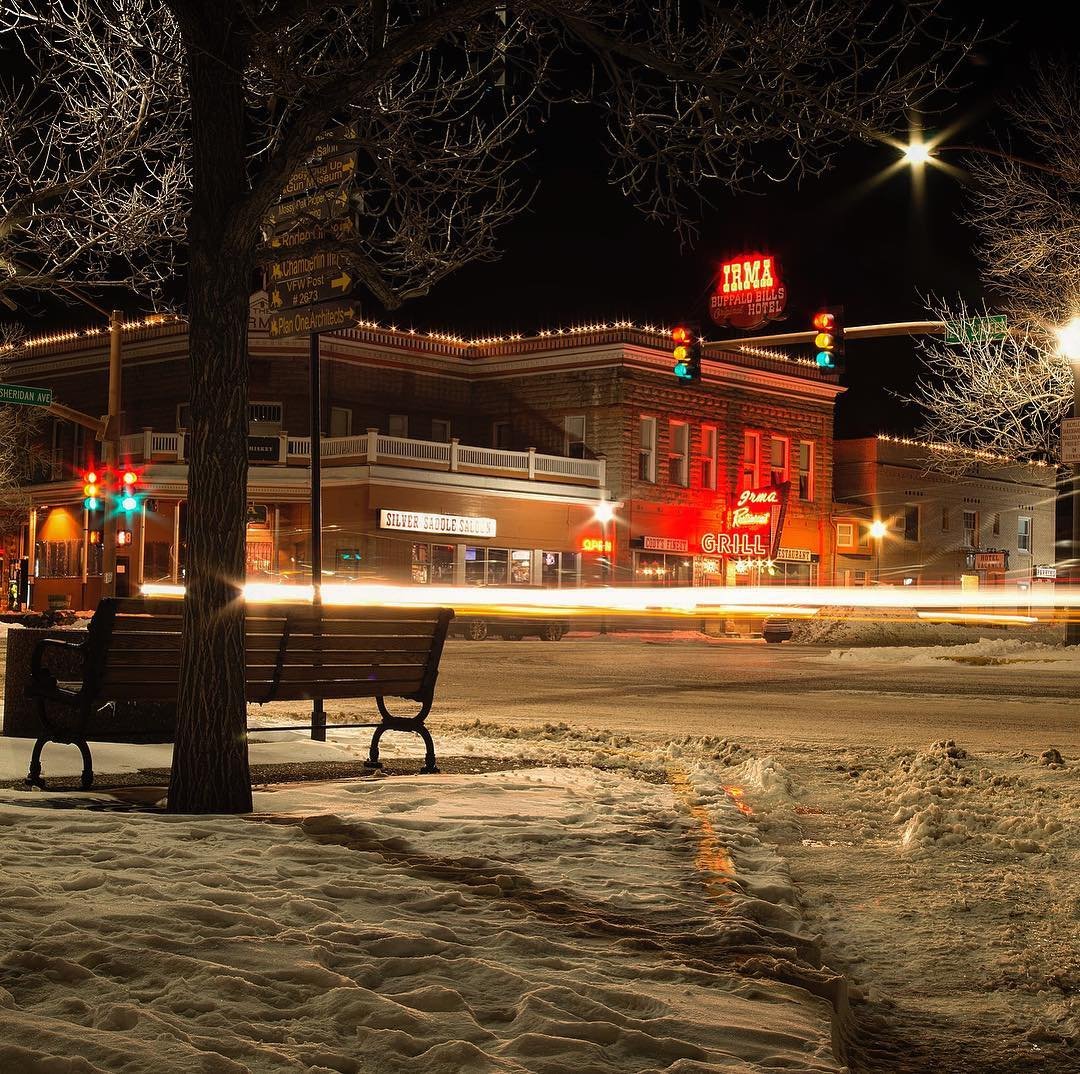
(Photo: @lifeontheout)
When you’ve finished photographing for the day, and it’s time to get out of the cold, Cody has plenty of options for dinner and relaxation.
- Enjoy a cocktail at the Chamberlin Inn. This boutique inn in the center of town features a cozy conservatory where guests can gather for beverages and light refreshments. One-time guest Ernest Hemingway inspired one of the inn’s most popular drinks — a delightful concoction called “Death in the Afternoon.”
- Feast on a prime rib dinner and enjoy conversation with locals at the Irma Hotel. This historic gathering place features a famous prime rib buffet, which has been called the best in Wyoming.
- Enjoy a steak and friendly atmosphere at the Proud Cut Saloon.
- Have a beer and a Reuben sandwich at Pat’s Brew House. This woman-owned watering hole is one of several brewpubs in town.
- In the mood for pizza? Try Millstone Pizza Company and Brewery or the Trailhead Bar and Grill. Both casual eateries are famous for their friendly atmosphere and pizzas made with fresh ingredients.
- Enjoy a craft beer at Cody Craft Brewing. With a family- and dog-friendly taproom right on Sheridan Avenue, Cody Craft Brewing is a warm and friendly place to enjoy an afternoon with locals.
Cody Yellowstone Creates Picture-Perfect Winter Getaways
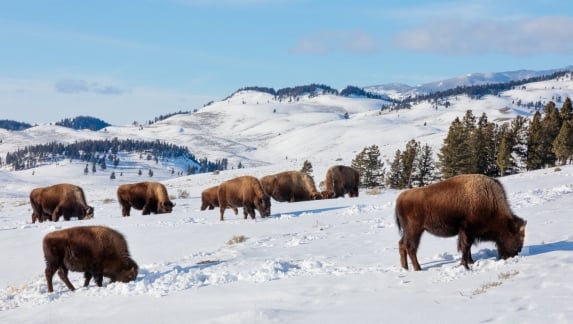
With wide-open spaces, incredible landscapes, exciting wildlife, and plenty of natural beauty, Cody Yellowstone is the perfect place to unleash your inner photographer. Start planning your winter getaway today — and be sure to tag us in all your winter photos using #CodyYellowstone.



